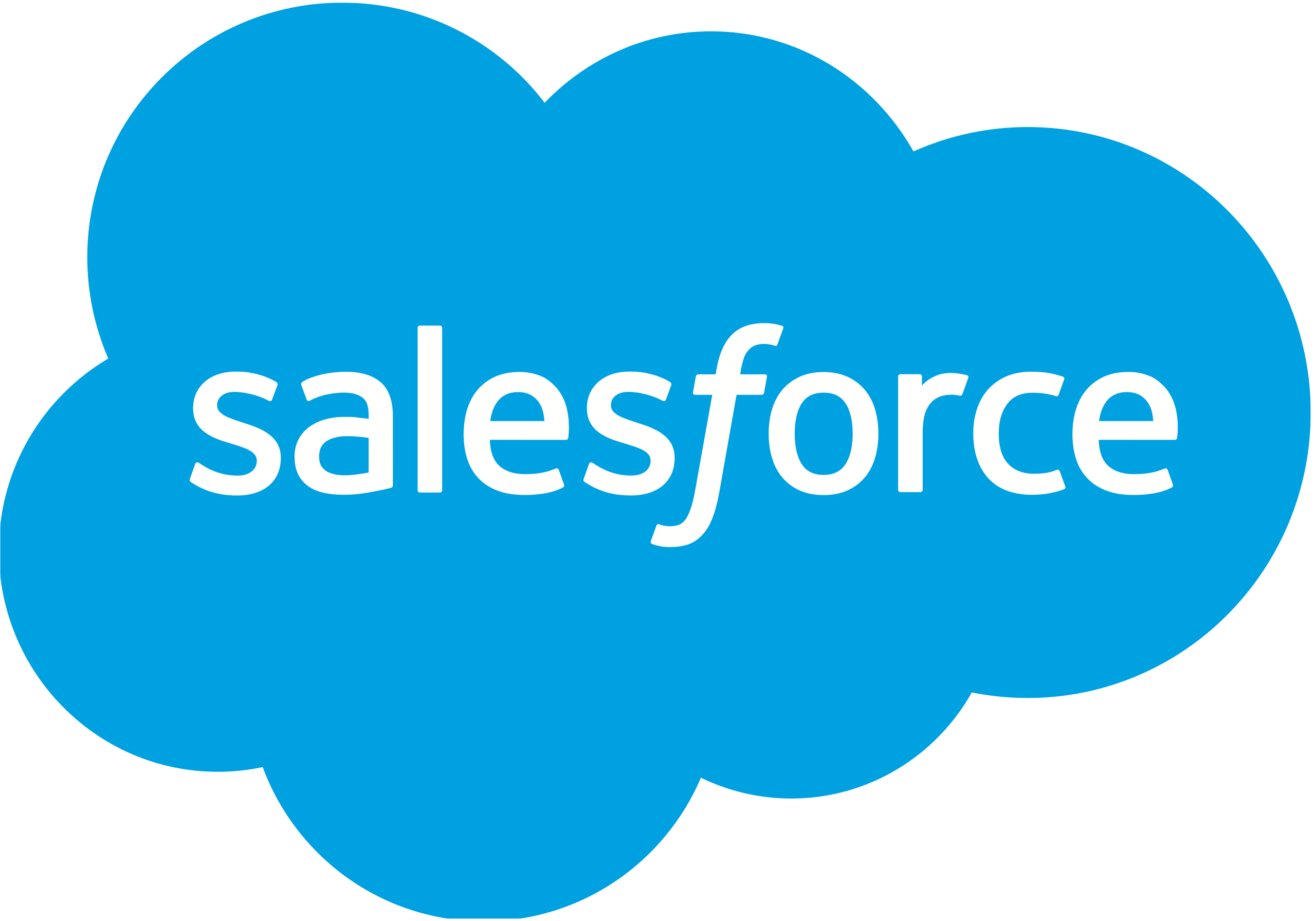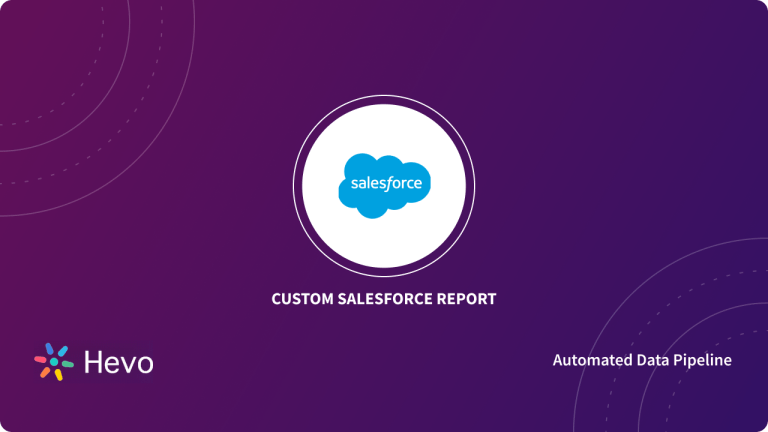Does your organization use Salesforce to manage its CRM? If so, it might be beneficial to integrate it with an external database to help you make sense of the massive amounts of data that Salesforce provides. This blog will provide an overview of how to achieve Salesforce database integration.
Salesforce does not currently support inbuilt integrations with external databases. Users have to connect using an integration service like a REST API to enjoy the benefits of an external database. You can use any one of the following approaches to integrate Salesforce data with your external database:
- Salesforce Database Integration Use Hevo Data
- Salesforce Database Integration Use Force.com Web Services API
- Salesforce Database Integration Use WSDL (Web Services Description Language)
- Salesforce Database Integration Use CopyStorm
Let’s explore these methods in detail.
Get Started with Hevo for FreeTable of Contents
Introduction To Salesforce
Salesforce is a cloud-based CRM tool that helps you maintain and manage your interactions with your customers. Salesforce also offers many cloud-based products, including the internet of things products and data analytics products, in addition to its flagship CRM tool. Salesforce is also able to integrate with a myriad of software tools, which makes it an incredibly versatile tool.
We will primarily focus on the Salesforce CRM tool for this blog.
Introduction To Databases
A database is simply a collection of electronic data stored in a computer system. There are many types of databases, but for this blog, we’ll briefly look at two types of databases. These are relational and non-relational (NoSQL) databases.
Relational databases
A Relational database is a database that stores data in uniquely identifiable tables known as relations. These relations represent entities in your business solution, and each relation also has columns, which are the attributes for these entities. Relational databases continue to be the most popular type of database in use today, although alternatives (like NoSQL databases) are gaining traction. Their popularity is largely due to the maturity/early entry, ease of use of the SQL language, and its effectiveness in maintaining high-quality data. Below are some of the examples of popular relational databases in the market:
- MySQL
- Microsoft SQL Server
- Postgres
- Oracle Database
- MariaDB
- IBM DB2
Non-Relational databases
Non-relational databases do not use the row and column schema that is used in relational databases. They also may not employ the SQL query language. They are also not uniform and typically have their query language and data objects. Some popular non-relational databases are:
- MongoDB
- Cassandra
- HBase
- Neo4J (Graph Database)
Understanding the Salesforce Database’s Relational Nature
Salesforce databases thrive on object-based relationships and allow users to either; leverage the standard objects & their relationships or create custom objects and derive relationships to share complex and dynamic information seamlessly. With Salesforce Databases in place, you can develop relational tables that not only store your customer data but also “share data” to provide more actionable insights, avoid data redundancy and boost performance.
Salesforce Databases follow two main types of relationship for their objects:
- Lookup Relationships: This represents the most simple and basic relationship between Salesforce objects. It allows users to lookup one data object from the other. It consists of data objects that are sometimes associated with one another.
- Master-Details Relationships: These relationships consist of one master and numerous detail objects, with the master controlling the detail object. It consists of data objects that are sometimes associated with one another. For example, if the master accounts object manages the contacts detail object, then deleting the master will result in all contacts getting removed.
Methods To Achieve Salesforce Database Integration
In this section you will learn how to connect to salesforce database. The following are some alternatives to connect Salesforce to your external database:
- Using Hevo Data
- Using Force.com Web Services API
- Using WSDL (Web Services Description Language)
- Using CopyStorm
1. Using Hevo Data
Use a fully automated, No-code Data Pipeline solution like Hevo Data. Hevo allows you to move data from sources like Salesforce to any database of your choice in real-time and for free. Hevo also helps you prepare, clean, enrich, and transform your Salesforce data, making sure that it is analysis-ready at any point in the targeted data warehouse.
Hevo offers a Salesforce connector that you may use to link the Salesforce database to any external database of your choice. The first step is to configure Salesforce as your source.
To set up Salesforce as a Source in your Pipeline, follow these steps:
- In the Navigation Bar, select PIPELINES > + CREATE.
- Choose Salesforce from the list of source types.
- Indicate the Pipeline Name, Authorised User Account, and Historical Sync Duration on the Configure your Salesforce Source page.
- Select CONTINUE to proceed with establishing the destination and data intake.
Setting your selected database as the destination is the next step. You will then have incorporated Salesforce data into an external database.
2. Using Force.com Web Services API
Integrate your data on Salesforce.com database and store it using the Force.com web services API. You can then use Data Loader to update it or build a Visualforce page on the data when needed.
3. Using WSDL (Web Services Description Language)
If you have a web service that provides a WSDL (Web Services Description Language) then you can do the following for Salesforce data synchronization:
- Import it to Apex Data Loader, which will then auto-generate Apex classes.
- Use HTTP Apex REST classes to construct a web messaging service.
4. Using CopyStorm
If you only need to send the data in one direction, then you can use one of the following Salesforce relational database integrations available through CopyStorm – Salesforce to SQL Server, Salesforce to MySQL, Salesforce to H2 or Salesforce to Oracle as Salesforce database connector.
Additionally, you need to choose between on-site and cloud data storage. Salesforce has cloud storage options, but in order to be safe during synchronization, you may also use a hybrid approach.
Salesforce Data Integration’s Advantages
The following are the advantages of integrating your data with Salesforce for your business:
- All types of data, including fields, attachments, comments, descriptions, and custom fields, may be synchronized with Salesforce using data integration rules. This will enhance the client experience and assist your company close knowledge gaps.
- You will have complete control over all data entering, leaving, and processing for your company. Your data may be immediately managed and visualized from the Salesforce CRM.
- Strict admin controls are provided by Salesforce, providing the highest level of security when transferring data between systems. In the event that the integration fails, your data is further protected by fail-safe mechanisms built into the exchange portal.
- Businesses may link an infinite number of Salesforce instances from various sources by using data integration solutions. This will assist your company in breaking down silos and creating a single source of truth (SSOT) for decision-making by creating a centralized data platform.
- Using Tableau CRM and Einstein Discovery to visualize your company’s data on a single interface is made easier with real-time data connectivity with Salesforce.
- Salesforce adapts swiftly to changes, which is advantageous for companies that depend on quick, real-time data processing to increase sales and satisfy customers.
Salesforce Integration Best Practices
Follow these Salesforce data integration best practices to safeguard your company’s information as well as that of your clients.
Organize your Data
You must organize your data before beginning any integration. Your data will stay unaltered whether it enters the Salesforce environment or vice versa if you do this. If not, you’ll have disorganized data that your users won’t be able to use.
Indicate the Integration’s Scope.
You must decide whether you wish to sync a portion of the current data with Salesforce or connect your complete data pool. Options for integrating Salesforce data guarantee that you don’t go over budget and that your team members don’t waste time.
Create an Integration Strategy
The integration strategy should include the desired storage environment, who is responsible for evaluating which data sets, and how your organisation intends to organize the data.
Conclusion
Even though Salesforce does not provide direct integration with an external database, the above 4 alternatives can help you achieve much of the same functionality if they are implemented well. Achieving Salesforce database integration, by using web services by Force.com or by using WSDL, requires extensive hard work and time. So, if you want to avoid the hassle involved in these methods and opt for fully automated service, then Hevo is the right choice for you.
Hevo is a No-code Data Pipeline. It can easily migrate your data from Salesforce to your desired destination within minutes and for free. It also offers pre-built integrations from 150+ data sources.
Sign Up for a 14-day free trial and experience the feature-rich Hevo suite first hand.
Frequently Asked Questions
Can Salesforce connect to external database?
Yes, Salesforce can connect to external databases using tools like Salesforce Connect, which allows real-time integration with external systems via OData or custom adapters. You can also use APIs, middleware, or ETL tools like Hevo Data.
What platforms does Salesforce integrate with?
Salesforce integrates with various platforms, including Google Workspace, Microsoft 365, Slack, AWS, SAP, and Tableau. It also connects with MuleSoft, HubSpot, Mailchimp, and QuickBooks. Salesforce AppExchange and APIs extend integration capabilities to many more applications.
Is Salesforce database SQL or NoSQL?
Salesforce primarily uses a proprietary database architecture called the Salesforce Object Query Language (SOQL), which resembles SQL but is specifically designed for Salesforce’s data model.










